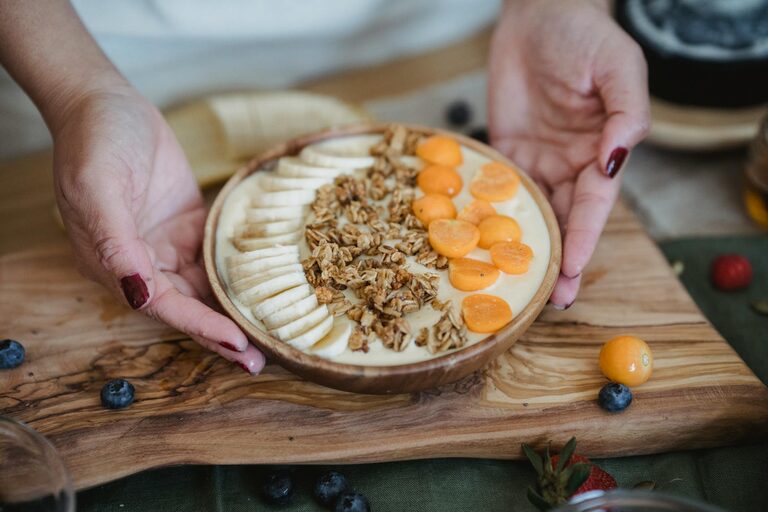Creating a weekly meal plan can be a game-changer for your kitchen routine. It helps you save time, reduce your grocery expenses, and make healthier choices without the daily stress of deciding what to cook. Whether you are a busy professional, a parent, or just someone who wants to eat better, a simple meal plan can make life easier.
In this post, you’ll learn how to create a straightforward weekly meal plan, even if you’re new to this idea. Let’s break down the process step-by-step!
Why Make a Weekly Meal Plan?
Before jumping into the how, let’s consider the benefits:
– Saves time: Knowing what you’re cooking each day means fewer trips to the store and less daily decision-making.
– Reduces food waste: Planning helps buy only what you need.
– Improves nutrition: It’s easier to balance meals with proteins, veggies, and grains when planned in advance.
– Lowers stress: You avoid last-minute scrambles trying to figure out dinner.
– Saves money: Sticking to a list and avoiding takeout reduces expenses.
Step 1: Assess Your Needs and Preferences
Start by examining your schedule and tastes:
– How many meals do you want to plan each day? (Breakfast, lunch, dinner, snacks?)
– Are you cooking for just yourself or your whole family?
– Do you have any dietary restrictions or preferences?
– How much time can you realistically spend cooking each day?
Knowing your answers will guide your plan so it’s tailored and sustainable.
Step 2: Gather Your Favorite Recipes
Collect a handful of recipes you enjoy and can prepare easily. These don’t need to be complicated—simple meals often work best. Aim to have:
– 3-5 dinner ideas
– 2-3 lunch options (especially if you bring lunch to work)
– Breakfast ideas (overnight oats, smoothies, scrambled eggs, etc.)
If you’re short on ideas, there are plenty of easy recipes online or apps that provide meal suggestions.
Step 3: Choose Your Planning Tools
You can plan your meals using:
– A paper planner or notebook
– A whiteboard in the kitchen
– Digital tools (apps like Google Calendar, Notion, or dedicated meal planning apps)
Choose the format that you find easiest to update and follow.
Step 4: Create a Meal Planning Template
Design a simple template to fill in your meals for each day. For example:
| Day | Breakfast | Lunch | Dinner | Snacks |
|———–|—————-|—————–|—————–|—————–|
| Monday | | | | |
| Tuesday | | | | |
| … | | | | |
You can print it out or set it up digitally to keep track.
Step 5: Plan Your Meals for the Week
Start filling in your template:
– Breakfasts: Choose easy-to-prepare or make-ahead items.
– Lunches: Plan leftovers from dinner or simple salads/sandwiches.
– Dinners: Assign your favorite recipes to each day. Consider cooking some meals twice if you want leftovers.
– Snacks: Include fruits, nuts, or yogurt to keep energy levels up.
When choosing dinners, also think about your schedule. On busier days, pick quicker recipes or use leftovers.
Step 6: Make a Grocery List
Once your meals are planned, write down the ingredients needed. Group items by category to speed up shopping:
– Produce (fruits, vegetables)
– Proteins (meat, beans, tofu)
– Grains (rice, pasta, bread)
– Dairy or alternatives
– Pantry staples (spices, oils, canned goods)
Check what you already have to avoid buying duplicates.
Step 7: Prep Ahead When Possible
To make weekdays easier, prepare some ingredients or meals in advance:
– Chop vegetables for the week
– Cook grains or proteins and store in the fridge
– Portion out snacks
– Assemble breakfasts like overnight oats ahead of time
Meal prepping saves time on busy days and keeps you on track.
Tips for Sticking to Your Meal Plan
– Be flexible: Life happens! Feel free to swap meals or adjust if plans change.
– Make it enjoyable: Include meals you love to look forward to cooking.
– Keep it simple: Don’t overload your plan with complicated recipes.
– Use leftovers: Plan some “leftover nights” to reduce cooking.
– Stay organized: Keep your kitchen tidy so cooking is a breeze.
Sample Simple Weekly Meal Plan
Here’s a sample to inspire you:
| Day | Breakfast | Lunch | Dinner | Snacks |
|———|———————|——————–|————————–|——————|
| Monday | Greek yogurt + fruit | Turkey sandwich | Baked chicken + veggies | Carrots & hummus |
| Tuesday | Overnight oats | Leftover chicken | Spaghetti with marinara | Apple slices |
| Wednesday | Smoothie | Salad with beans | Stir-fry tofu + rice | Nuts |
| Thursday | Scrambled eggs | Tuna wrap | Grilled salmon + salad | Yogurt |
| Friday | Toast + avocado | Leftover stir-fry | Homemade veggie pizza | Mixed berries |
| Saturday | Pancakes | Soup & bread | BBQ chicken + corn | Popcorn |
| Sunday | Omelet | Pasta salad | Roast beef + potatoes | Dark chocolate |
Final Thoughts
Starting a weekly meal plan doesn’t have to be complicated. By knowing your needs, sticking to simple recipes, and prepping ahead, you can save time, reduce stress, and enjoy better meals. The key is consistency and flexibility, so adjust your plan as you discover what works best for you.
Happy cooking and planning!

